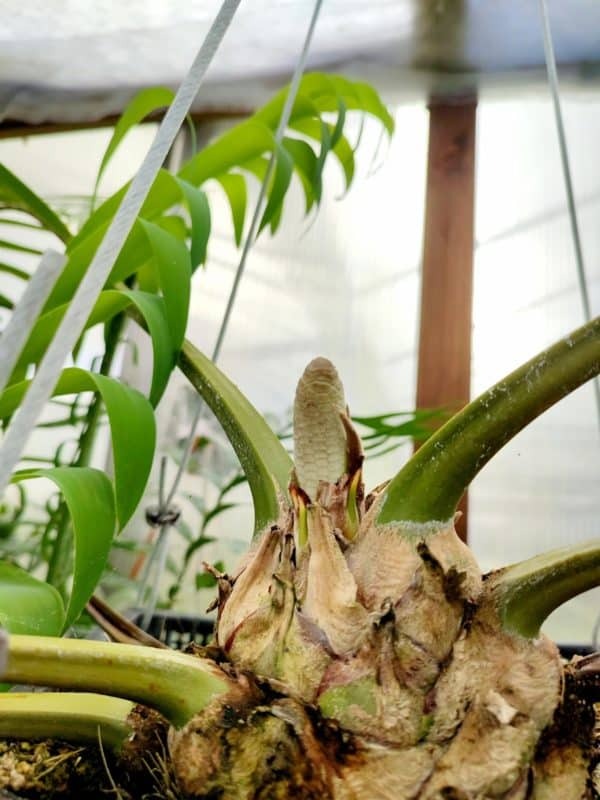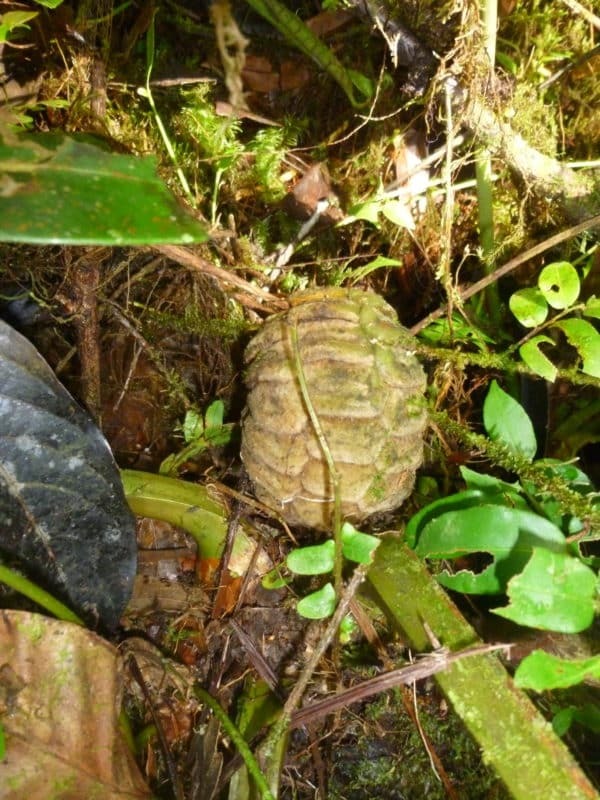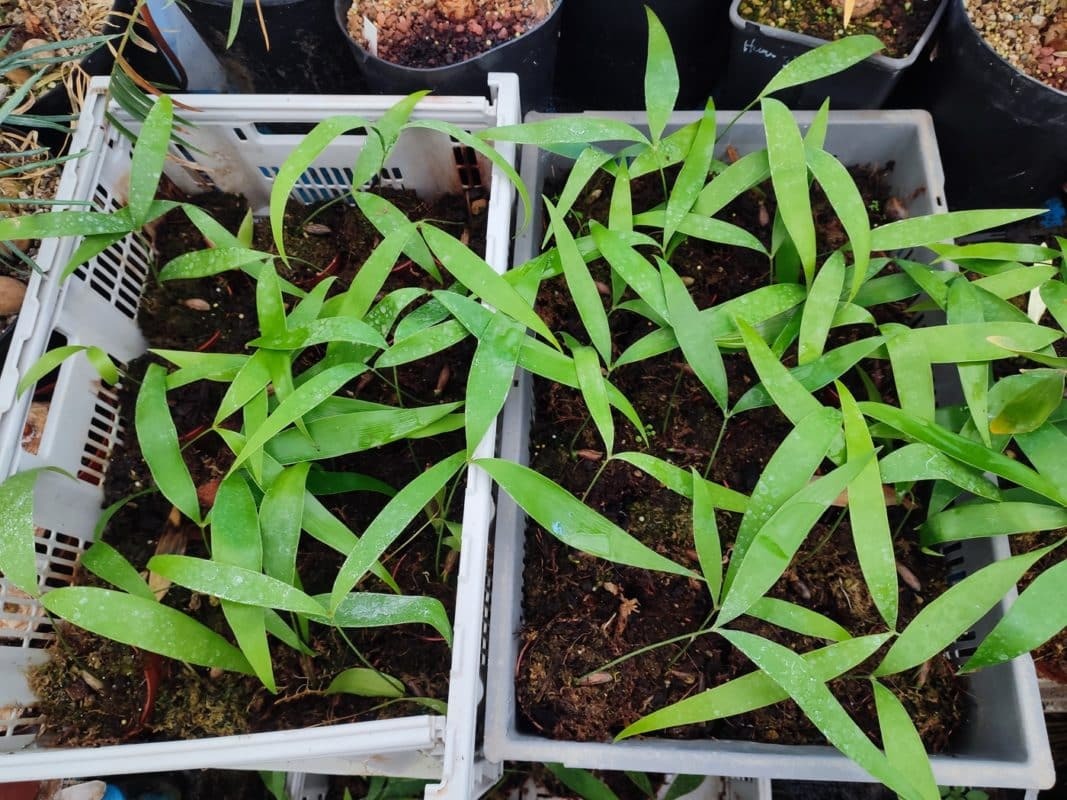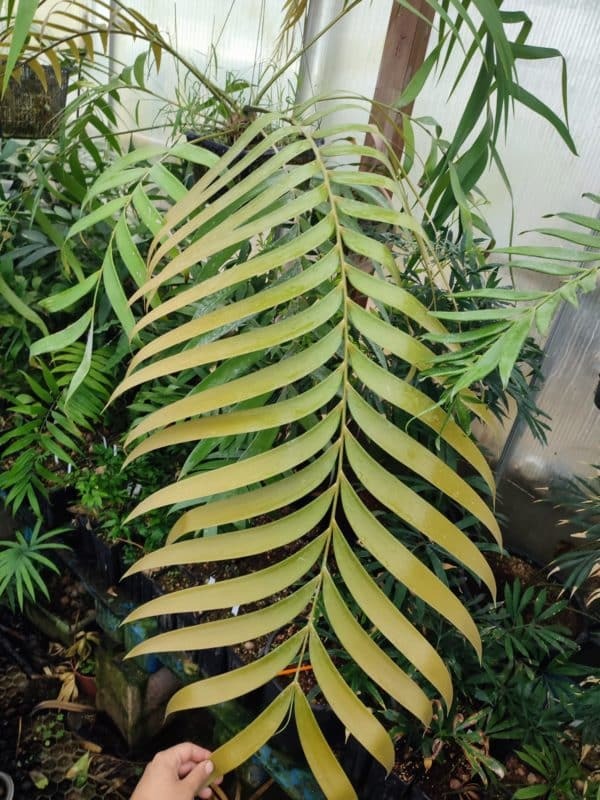Uncategorized
Zamia pseudoparasitica care sheet
By Simon Lavaud, 25th May 2023
Cycadales.eu, lavaud.simon@gmail.com
Click on the PDF logo to download a free PDF version of this article!
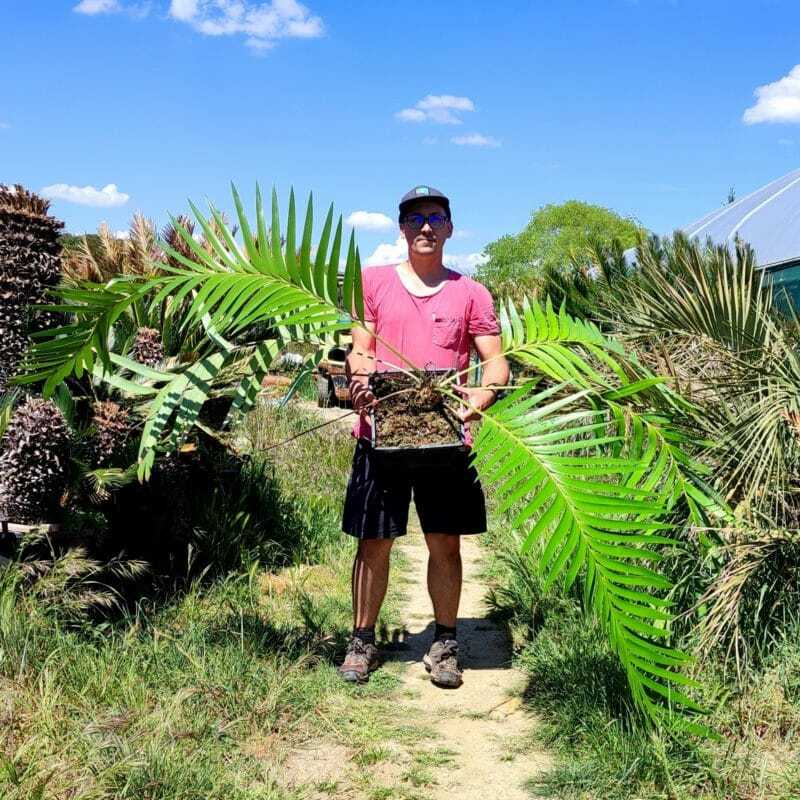
Introduction :
This species being the only epiphytic cycad, and even the only strictly epiphytic gymnosperm, its cultivation conditions deserve a more in-depth focus compared to other cycads.
Zamia pseudoparasitica is a species endemic of Panama where it’s found from sea level up to 1000m and almost exclusively in primary rain forests. It’s explained by the fact that this species is only found on very big trees, probably because their branches are covered in a dense mat of mosses and epiphytes that allow the Zamia to establish durably. With a stem that can reach 50-100cm for the oldest specimens, and leaves up to 3m long, another constraint to consider is the heavy weight of the plant that needs a strong support to grow on.
The climate is tropical humid with 2500-300mm of rain per year, and a temperature comprised between 20 and 28°C (maybe sometimes a little cooler for the highest localities)


Cultivation environment :
This species seems to be able to tolerate fairly extreme temperatures for a tropical species, around 15°C and up to 40°C if the air humidity is high enough, around 90-100 % (something I experienced during the 2022 heatwave). But for an optimal growth, we’ll prefer a temperature comprised between 20°C (at night) and a maximum temperature of 32°C (during the day). As for many tropical species, some night temperatures of around 17-18°C are possible if temperatures rise at 25°C and above during the day.
It’s important to keep in mind that every time we stray out of the proper temperature range of a species, there are risks involved such as root rot when it’s too cool, or dehydration when it’s too hot.
Optimum air humidity is around 80-90 % but like many epiphytes, this species can tolerate important air humidity variations and doesn’t seem to suffer from periods with 50-60 % humidity.
Substrate :
This species grows well in a substrate made for epiphytic plants. Here I use a mix made of 1/3 sphagnum moss, 1/3 coco chips, 1/3 pumice and Osmocote fertilizer. But other growers also use pine bark, perlite etc. A commercial orchid mix from the garden center should suit the plants well.

Container :
Here I use plastic baskets with lots of holes, in a very humid greenhouse. So the plastic was chosen to avoid fast decay.
If you grow the plants in a fairly dry climate, the baskets might not be optimal because the growing medium might dry too fast. In this case, a plastic pot will do.
In general, Zamia from wet environments don’t have a very large root system, so it’s not necessary to use very large pots. For this species, I prefer using pots or baskets that are slightly undersized so that the soil can dry out between two waterings, something important when temperatures are cool in winter (allowing the medium to dry a bit helps avoiding rot)
Watering :
Since this species grows in decomposing organic matter and only receives rain water in habitat, it’s advisable to use a soft and slightly acidic water or rain water (or demineralized/distilled)
When it’s hot (between 25 and 35°C) the growing medium can be kept fairly wet at all times. But when temperatures become lower and go under the optimum, it’s best to reduce watering and allow the substrate to to dry between each watering, to avoid root rot. Though it’s important to not allow the substrate to become completely dry : as these plants have large leaves for a small root system, they can dehydrate very quickly.
Light:
This species being a tree dweller, it’s very often exposed to the sun and will tolerate various light conditions. I advise against full sun in South Europe, especially if the air is dry.
My plants are all cultivated in dappled shade and they’re doing very well.
Another reason to avoid full sun is if you’re growing this species indoors in winter and outdoors in summer : a plant that spent the whole winter inside might burn when taken outside.
Notes :
Osmocote fertilizers for indoor plants works very well. But like many cycads, this species doesn’t seem to be very picky in terms of fertilizer and NPK as long as it’s well balanced.
Beware of mealybugs, they love this species.
As for all slow growing plants, don’t cut green leaves ! It’s best to wait until the leaves become yellow and dry out because when they die, they send back precious nutrients to the plant. Cutting healthy leaves has only one effect : make the plant grow slower.
If you’re going to put the plant in a basket, make sure the support is strong enough ! An adult plant can weight several dozens kg !
These plants start coning when the caudex reaches a diameter of 7cm for males, more for females.
